Drinking Water Treatment
Cross Flow Filtration Method Handbook
Views : 153
Usually dispatched in 2 to 3 days
Usually dispatched in 2 to 3 days
Category:
Drinking Water Treatment
The Cross Flow Filtration Method Handbook gives a general introduction to the principles and applications of cross flow filtration using systems and filters from GE. Detailed instructions for preparing, using, cleaning and storing particular filters are provided with each filter.
Only logged in customers who have purchased this product may leave a review.
Related books
An Integrated Photoelectrochemical Zero Liquid Discharge System for Inland Brackish Water Desalination
Surging population, energy demands, and climate change will push us, ever more urgently, to find new approaches to meet growing water demands. Most often, this will involve harvesting lower quality or impaired water supplies (e.g., seawater or brackish groundwater) as a source for drinking water. Recently desalination using membrane-based processes (e.g., reverse osmosis [RO], electrodialysis [ED], and nanofiltration [NF]) has shown promise for providing additional sources of fresh water across the United States. However, the current membrane separation processes are commonly energy intensive and produce large volumes of concentrated brine which poses unique challenges. Particularly in land-locked urban center brine disposal often relyes on surface water discharge or deep-well injection which pose economic and practical difficulties for wide-spread adoption of such technologies. Thus, there is an urgent need for energy-efficient desalination technologies that reduce the amount of concentrate produced, or identify cost-effective solutions for concentrate management.
An Integrated Photoelectrochemical Zero Liquid Discharge System for Inland Brackish Water Desalination
Surging population, energy demands, and climate change will push us, ever more urgently, to find new approaches to meet growing water demands. Most often, this will involve harvesting lower quality or impaired water supplies (e.g., seawater or brackish groundwater) as a source for drinking water. Recently desalination using membrane-based processes (e.g., reverse osmosis [RO], electrodialysis [ED], and nanofiltration [NF]) has shown promise for providing additional sources of fresh water across the United States. However, the current membrane separation processes are commonly energy intensive and produce large volumes of concentrated brine which poses unique challenges. Particularly in land-locked urban center brine disposal often relyes on surface water discharge or deep-well injection which pose economic and practical difficulties for wide-spread adoption of such technologies. Thus, there is an urgent need for energy-efficient desalination technologies that reduce the amount of concentrate produced, or identify cost-effective solutions for concentrate management.
Appropriate Technologies For Drinking Water Treatment In Mediterranean Countries
This paper aims at analyzing the drinking water issue in the Mediterranean region, highlighting the principal problems and the appropriate technologies applicable in the different countries. The countries of this area are characterized by a huge variety from social, cultural, economic and environmental point of view. In particular, water distribution is inhomogeneous between the North, East, and South; even the type of water sources and the related quantity and quality problems differ country by country. Potable water comes from brackish and seawater, surface water, groundwater and water reservoirs with each source face different issues. The main problem of brackish and seawater for example is the high salinity and the contamination by disinfection byproducts, in addition to the microbiological and chemical contamination due to human activities that characterize also other surface water sources. Groundwater is also affected by human activity and it is not exempted from salinity because of the water intrusion. Moreover, water reservoirs are often contaminated by seasonal algal blooms. Technologies applied for drinking water treatment vary country by country. The paper presents the main treatment processes
associated with the main water pollutants, according to the Mediterranean region. Case studies of drinking water treatment plants are also analyzed, presenting alternative technologies appropriate for specific contexts, among others. The characteristics of each specific context should be carefully analyzed in order to develop the most appropriate technologies; high-end technologies for drinking water treatment may not be applied equally to all countries or communities of the Mediterranean region.
Appropriate Technologies For Drinking Water Treatment In Mediterranean Countries
This paper aims at analyzing the drinking water issue in the Mediterranean region, highlighting the principal problems and the appropriate technologies applicable in the different countries. The countries of this area are characterized by a huge variety from social, cultural, economic and environmental point of view. In particular, water distribution is inhomogeneous between the North, East, and South; even the type of water sources and the related quantity and quality problems differ country by country. Potable water comes from brackish and seawater, surface water, groundwater and water reservoirs with each source face different issues. The main problem of brackish and seawater for example is the high salinity and the contamination by disinfection byproducts, in addition to the microbiological and chemical contamination due to human activities that characterize also other surface water sources. Groundwater is also affected by human activity and it is not exempted from salinity because of the water intrusion. Moreover, water reservoirs are often contaminated by seasonal algal blooms. Technologies applied for drinking water treatment vary country by country. The paper presents the main treatment processes
associated with the main water pollutants, according to the Mediterranean region. Case studies of drinking water treatment plants are also analyzed, presenting alternative technologies appropriate for specific contexts, among others. The characteristics of each specific context should be carefully analyzed in order to develop the most appropriate technologies; high-end technologies for drinking water treatment may not be applied equally to all countries or communities of the Mediterranean region.
Biofilm Control Study
Darigold operates a milk products facility in Lynden, Washington. Production processes include evaporation of milk, which generates what is referred to as condensate of whey (COW) water. COW water contains low molecular weight organic compounds including traces of lactic acid, alcohols, acetoin, and non-protein nitrogen (Möslang, 2017). COW water and non-contact cooling water from the Darigold Lynden facility are currently discharged to Outfall 001, which combines with stormwater and the City of Lynden’s wastewater treatment plant (WWTP) effluent discharge to the Nooksack River through the City’s outfall. Darigold’s discharge is regulated under National Pollutant Discharge Elimination System (NPDES) Permit No. WA0002470 administered by the Washington Department of Ecology (Ecology). In the future, Darigold’s COW Water and non-contact cooling water will be directly discharged to the Nooksack River in a new outfall pipe (Outfall 002) currently being constructed by the City.
Biofilm Control Study
Darigold operates a milk products facility in Lynden, Washington. Production processes include evaporation of milk, which generates what is referred to as condensate of whey (COW) water. COW water contains low molecular weight organic compounds including traces of lactic acid, alcohols, acetoin, and non-protein nitrogen (Möslang, 2017). COW water and non-contact cooling water from the Darigold Lynden facility are currently discharged to Outfall 001, which combines with stormwater and the City of Lynden’s wastewater treatment plant (WWTP) effluent discharge to the Nooksack River through the City’s outfall. Darigold’s discharge is regulated under National Pollutant Discharge Elimination System (NPDES) Permit No. WA0002470 administered by the Washington Department of Ecology (Ecology). In the future, Darigold’s COW Water and non-contact cooling water will be directly discharged to the Nooksack River in a new outfall pipe (Outfall 002) currently being constructed by the City.
Application of Water Quality Index and Water Suitability for Drinking of the Euphrates River within Al-Anbar Province, Iraq
In this study water quality was indicated in terms of Water Quality Index that was determined through summarizing multiple parameters of water test results. This index offers a useful representation of the overall quality of water for public or any intended use as well as indicating pollution, which are useful in water quality management and decision making. The application of Water Quality Index (WQI) with ten physicochemical water quality parameters was performed to evaluate the quality of Euphrates River water for drinking usage. This was done by subjecting the water samples collected from seven stations within Al-Anbar province during the period 2004-2010 to comprehensive physicochemical analysis.
Application of Water Quality Index and Water Suitability for Drinking of the Euphrates River within Al-Anbar Province, Iraq
In this study water quality was indicated in terms of Water Quality Index that was determined through summarizing multiple parameters of water test results. This index offers a useful representation of the overall quality of water for public or any intended use as well as indicating pollution, which are useful in water quality management and decision making. The application of Water Quality Index (WQI) with ten physicochemical water quality parameters was performed to evaluate the quality of Euphrates River water for drinking usage. This was done by subjecting the water samples collected from seven stations within Al-Anbar province during the period 2004-2010 to comprehensive physicochemical analysis.
Inorganic Contaminant Removal
The 2006 version of the Pa. DEP Inorganic Contaminant Removal module has detailed advanced treatment information on this topic and can be obtained by e-mailing the Pa. DEP Safe Drinking Water Training Section at DEPWSTechtrain@pa.gov to request a copy. This advanced module has additional information on the removal of various inorganic contaminants as well as on oxidation, ion exchange, activated alumina and sequestration. The 2006 document also includes more detailed information on the inorganic contaminant treatments of GAC (granular activated carbon), coagulation/filtration, membranes, and lime softening. It includes the following information:
- Inorganic contaminant treatment selection considerations
- Advanced inorganic contaminant removal chemistry terminology
- Advanced inorganic contaminant removal chemistry explanations
- Conventional filtration and how it relates to inorganic removal
- Detailed information on treatments for iron and manganese removal
- Detailed information on treatments for hardness removal
- Detailed information on inorganic contaminant monitoring protocols
- Detailed tables on the following topics:
- Sources of 26 inorganic contaminants
- Common secondary standards with effects, inorganic contributors and indications
- Various treatment technology options to consider for 24 inorganic contaminants
- Potential forms of iron and manganese
- Iron and manganese sampling procedures
- Iron and manganese oxidant selection criteria
- Iron and manganese theoretical (initial) dosing criteria
- Potential treatments for less common inorganics
- Potential treatments for miscellaneous trace metals
Inorganic Contaminant Removal
The 2006 version of the Pa. DEP Inorganic Contaminant Removal module has detailed advanced treatment information on this topic and can be obtained by e-mailing the Pa. DEP Safe Drinking Water Training Section at DEPWSTechtrain@pa.gov to request a copy. This advanced module has additional information on the removal of various inorganic contaminants as well as on oxidation, ion exchange, activated alumina and sequestration. The 2006 document also includes more detailed information on the inorganic contaminant treatments of GAC (granular activated carbon), coagulation/filtration, membranes, and lime softening. It includes the following information:
- Inorganic contaminant treatment selection considerations
- Advanced inorganic contaminant removal chemistry terminology
- Advanced inorganic contaminant removal chemistry explanations
- Conventional filtration and how it relates to inorganic removal
- Detailed information on treatments for iron and manganese removal
- Detailed information on treatments for hardness removal
- Detailed information on inorganic contaminant monitoring protocols
- Detailed tables on the following topics:
- Sources of 26 inorganic contaminants
- Common secondary standards with effects, inorganic contributors and indications
- Various treatment technology options to consider for 24 inorganic contaminants
- Potential forms of iron and manganese
- Iron and manganese sampling procedures
- Iron and manganese oxidant selection criteria
- Iron and manganese theoretical (initial) dosing criteria
- Potential treatments for less common inorganics
- Potential treatments for miscellaneous trace metals
Introduction to Water Treatment
This is an introduction to water treatment systems and technology. It is not a design manual or an exhaustive treatise. It is intended for engineers who are not regularly involved in water treatment projects, but who are interested in learning some of the basics involved. Criteria to be followed in determining the necessity for and the extent of treatment are discussed here, as are procedures applicable to the planning of water treatment projects.
Introduction to Water Treatment
This is an introduction to water treatment systems and technology. It is not a design manual or an exhaustive treatise. It is intended for engineers who are not regularly involved in water treatment projects, but who are interested in learning some of the basics involved. Criteria to be followed in determining the necessity for and the extent of treatment are discussed here, as are procedures applicable to the planning of water treatment projects.
Package Plants For Drinking Water Treatment
In efforts to make package plants more compact, affordable and easier to operate and maintain, it has been noted that the design and performance of some of these plants containing conventional treatment processes is sometimes compromised if technical expertise in this regard is lacking. Generally, there are several risks associated with poorly designed treatment systems, including loss of production, poor safety and compromised equipment and process unit efficiency with associated higher operating and maintenance costs. These risks have more severe consequences in the case of desalination (including water reclamation and water re-use) package plants. The objective of this project is to develop a set of guidelines to assist municipalities, water treatment practitioners, designers and package plant manufacturers in the specification and design of appropriate unit processes and operating parameters to fit the influent water quality, operating environment and other special treatment requirements.
Package Plants For Drinking Water Treatment
In efforts to make package plants more compact, affordable and easier to operate and maintain, it has been noted that the design and performance of some of these plants containing conventional treatment processes is sometimes compromised if technical expertise in this regard is lacking. Generally, there are several risks associated with poorly designed treatment systems, including loss of production, poor safety and compromised equipment and process unit efficiency with associated higher operating and maintenance costs. These risks have more severe consequences in the case of desalination (including water reclamation and water re-use) package plants. The objective of this project is to develop a set of guidelines to assist municipalities, water treatment practitioners, designers and package plant manufacturers in the specification and design of appropriate unit processes and operating parameters to fit the influent water quality, operating environment and other special treatment requirements.
A Large Review of the Pre Treatment
Introduction:
Desalination using seawater reverse osmosis (SWRO) technology is an important option available to water-scarce coastal regions. Worldwide sea water desalination is a very effective and economical way of producing potable water for drinking and industries. Reverse osmosis plants to convert sea water to potable drinking water and for other usages have been prevalent throughout the world for more than 4 decades. Design and operation of seawater reverse osmosis plants strongly depend on the raw seawater quality to be treated. The performance of desalination reverse osmosis (RO) systems relies upon the production of high quality pre treated water, and the selection of the best pre treatment technology depends on the raw seawater quality and its variations. Number of full-scale experiences has shown that pre treatment is the key for this application of reverse osmosis technology. It is why during these last years, an import effort has been done to identify and to characterise the diverse organic and mineral components present in the seawater in a view to optimise the seawater pre-treatment and to develop advanced analytical methods for feed water characterization, appropriate fouling indicators and prediction tools. This Chapter describes firstly a comprehensive approach to characterize raw seawater samples through analytical tools which allow the knowledge of the characterization of seawater from many aspects: (a) inorganic content, (b) natural organic matter, (c) enumeration of micro-organisms and phytoplankton. Secondly, this Chapter describes the effect of each of these parameters on the fouling of the reverse osmosis membrane. Finally, this chapter describes the different possible pre treatments available to reduce or remove the elements or substances up-stream reverse osmosis stage.
A Large Review of the Pre Treatment
Introduction:
Desalination using seawater reverse osmosis (SWRO) technology is an important option available to water-scarce coastal regions. Worldwide sea water desalination is a very effective and economical way of producing potable water for drinking and industries. Reverse osmosis plants to convert sea water to potable drinking water and for other usages have been prevalent throughout the world for more than 4 decades. Design and operation of seawater reverse osmosis plants strongly depend on the raw seawater quality to be treated. The performance of desalination reverse osmosis (RO) systems relies upon the production of high quality pre treated water, and the selection of the best pre treatment technology depends on the raw seawater quality and its variations. Number of full-scale experiences has shown that pre treatment is the key for this application of reverse osmosis technology. It is why during these last years, an import effort has been done to identify and to characterise the diverse organic and mineral components present in the seawater in a view to optimise the seawater pre-treatment and to develop advanced analytical methods for feed water characterization, appropriate fouling indicators and prediction tools. This Chapter describes firstly a comprehensive approach to characterize raw seawater samples through analytical tools which allow the knowledge of the characterization of seawater from many aspects: (a) inorganic content, (b) natural organic matter, (c) enumeration of micro-organisms and phytoplankton. Secondly, this Chapter describes the effect of each of these parameters on the fouling of the reverse osmosis membrane. Finally, this chapter describes the different possible pre treatments available to reduce or remove the elements or substances up-stream reverse osmosis stage.
Aerogel & Iron-Oxide Impregnated Granular Activated Carbon Media For Arsenic Removal
The goal of this project is to validate proof-of-concept testing for iron enriched granular activated carbon (GAC) composites (aerogel-GAC or iron-oxide impregnated) as a viable adsorbent for removing arsenic from groundwater and conduct technical and economic feasibility assessments for these innovative processes. Specific project objectives include: • Conduct batch experiments for aerogel-GAC and Fe-oxide impregnated GAC composites to evaluate their performance removing arsenic.
• Evaluate Fe-GAC media performance in rapid small scale column tests (RSSCTs) to assess arsenic removal in a more dynamic treatment system.
• Evaluate Fe-GAC potential for removal of other contaminants (e.g., methyl tertiary butyl ether, dissolved organic carbon).
• Characterize Fe-GAC media.
• Correlate performance and media characterization for possible selection of two media for a future second phase of this project.
Aerogel & Iron-Oxide Impregnated Granular Activated Carbon Media For Arsenic Removal
The goal of this project is to validate proof-of-concept testing for iron enriched granular activated carbon (GAC) composites (aerogel-GAC or iron-oxide impregnated) as a viable adsorbent for removing arsenic from groundwater and conduct technical and economic feasibility assessments for these innovative processes. Specific project objectives include: • Conduct batch experiments for aerogel-GAC and Fe-oxide impregnated GAC composites to evaluate their performance removing arsenic.
• Evaluate Fe-GAC media performance in rapid small scale column tests (RSSCTs) to assess arsenic removal in a more dynamic treatment system.
• Evaluate Fe-GAC potential for removal of other contaminants (e.g., methyl tertiary butyl ether, dissolved organic carbon).
• Characterize Fe-GAC media.
• Correlate performance and media characterization for possible selection of two media for a future second phase of this project.

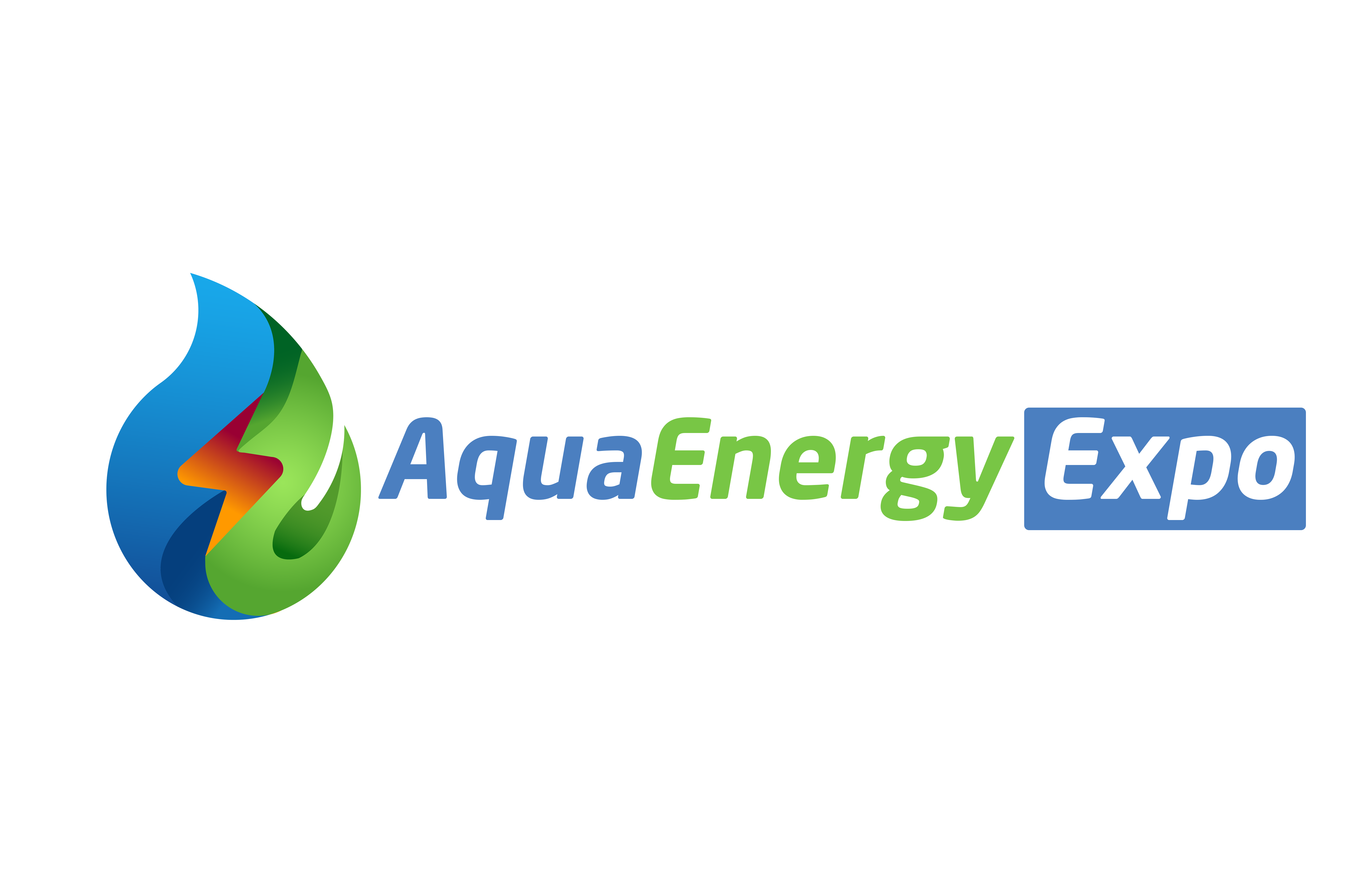
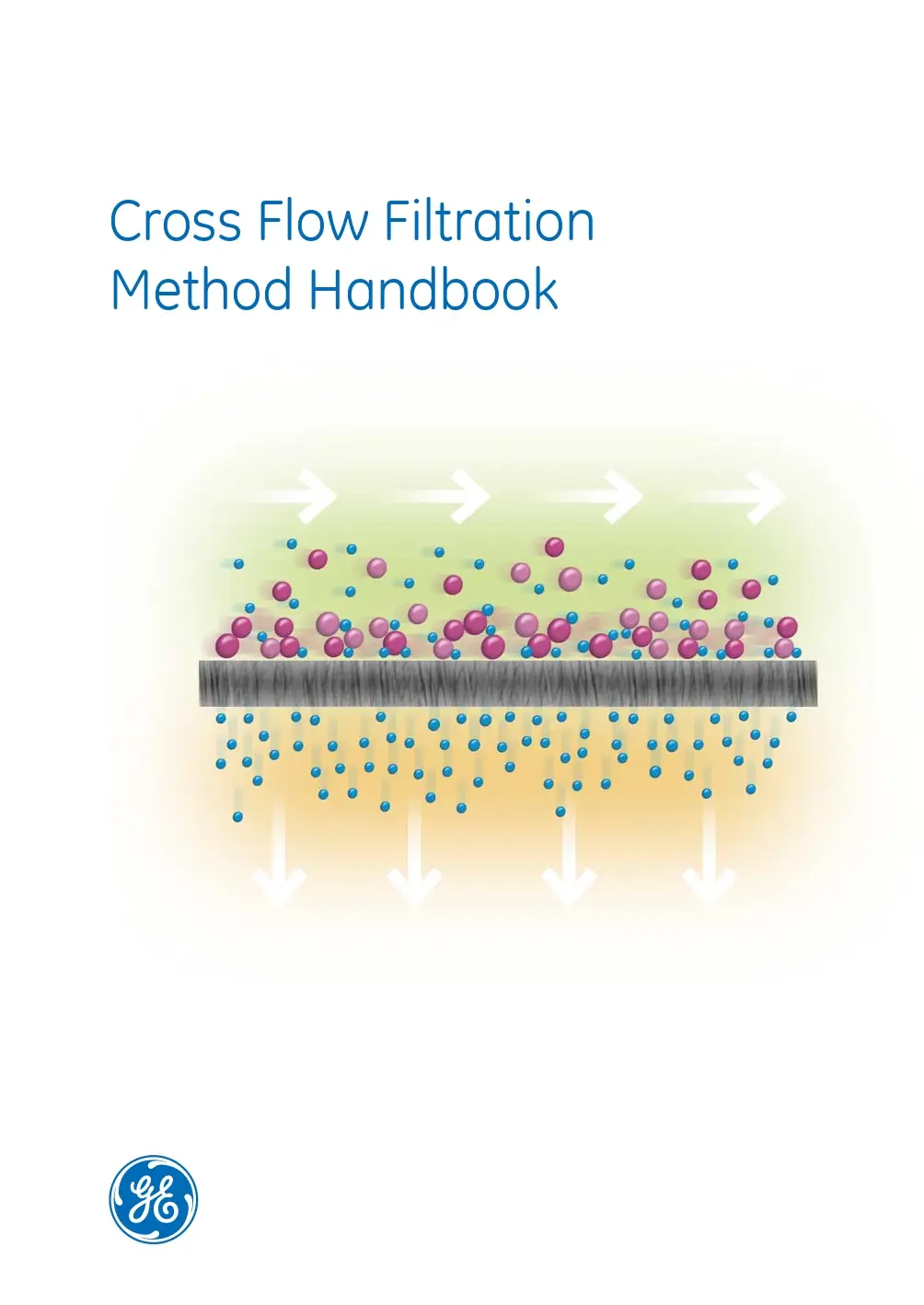



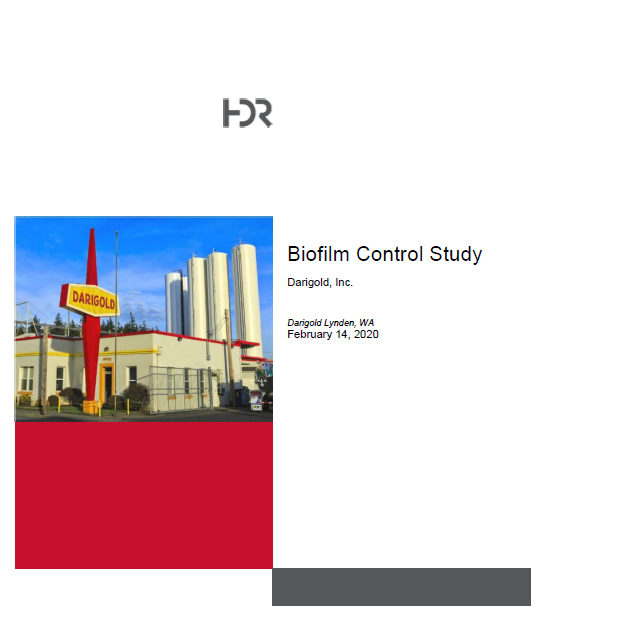

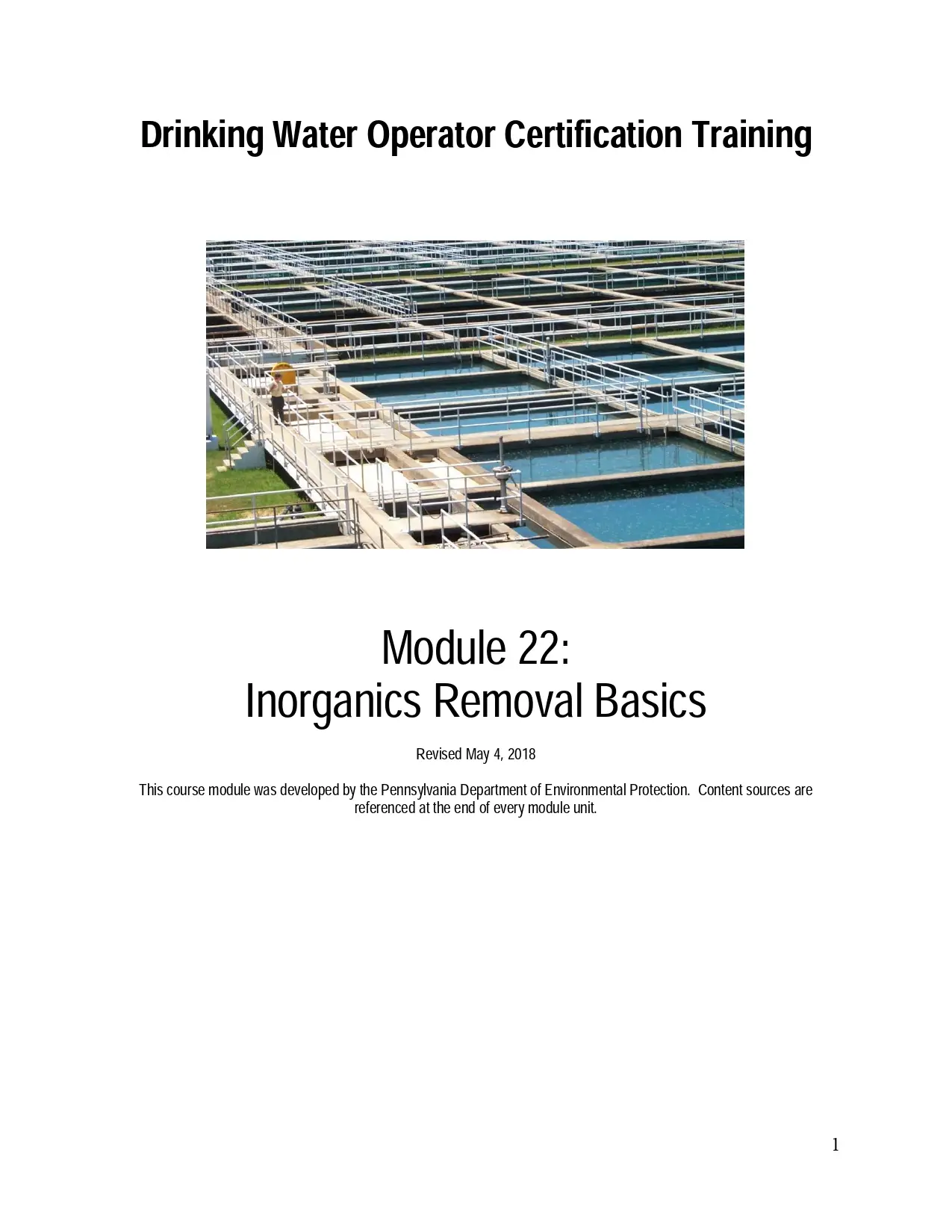



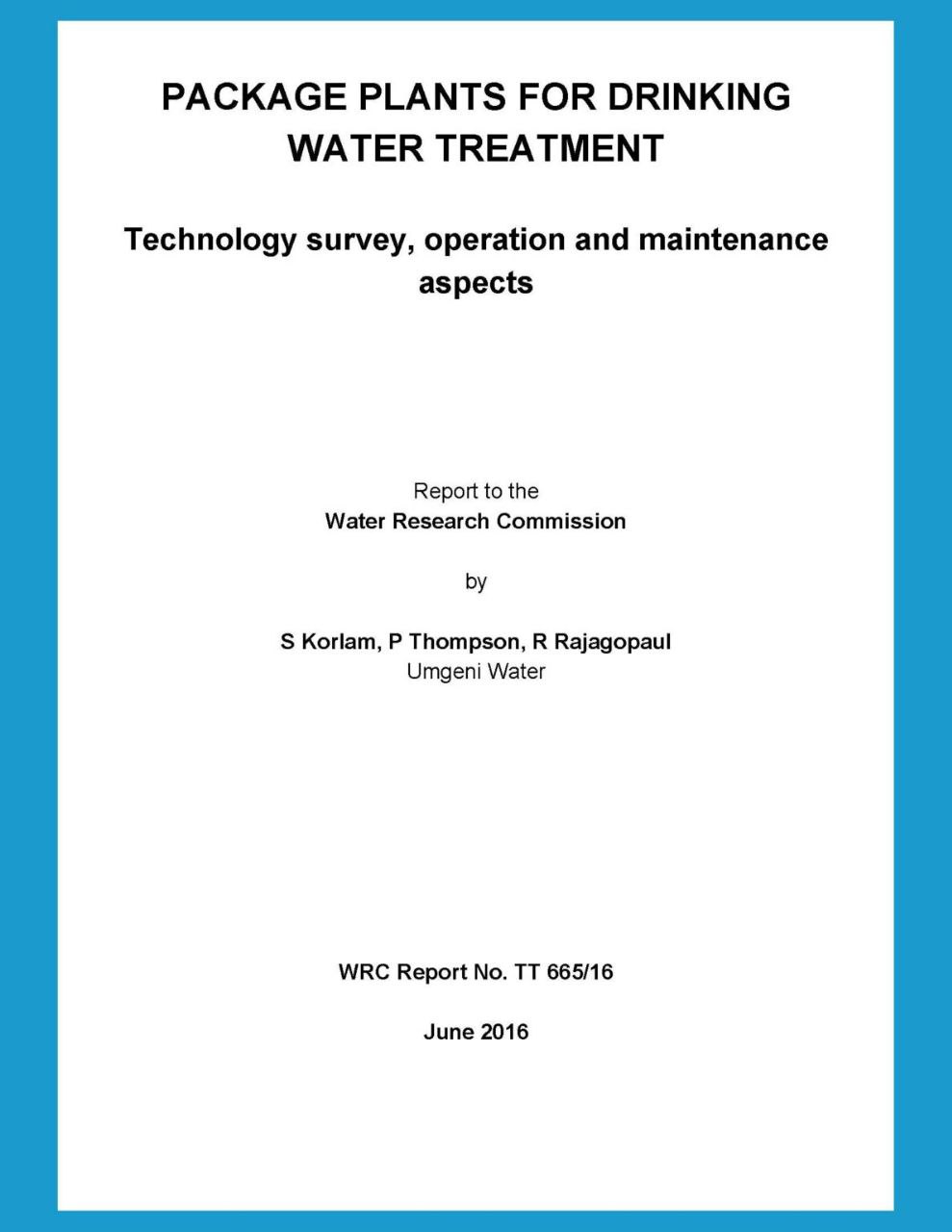
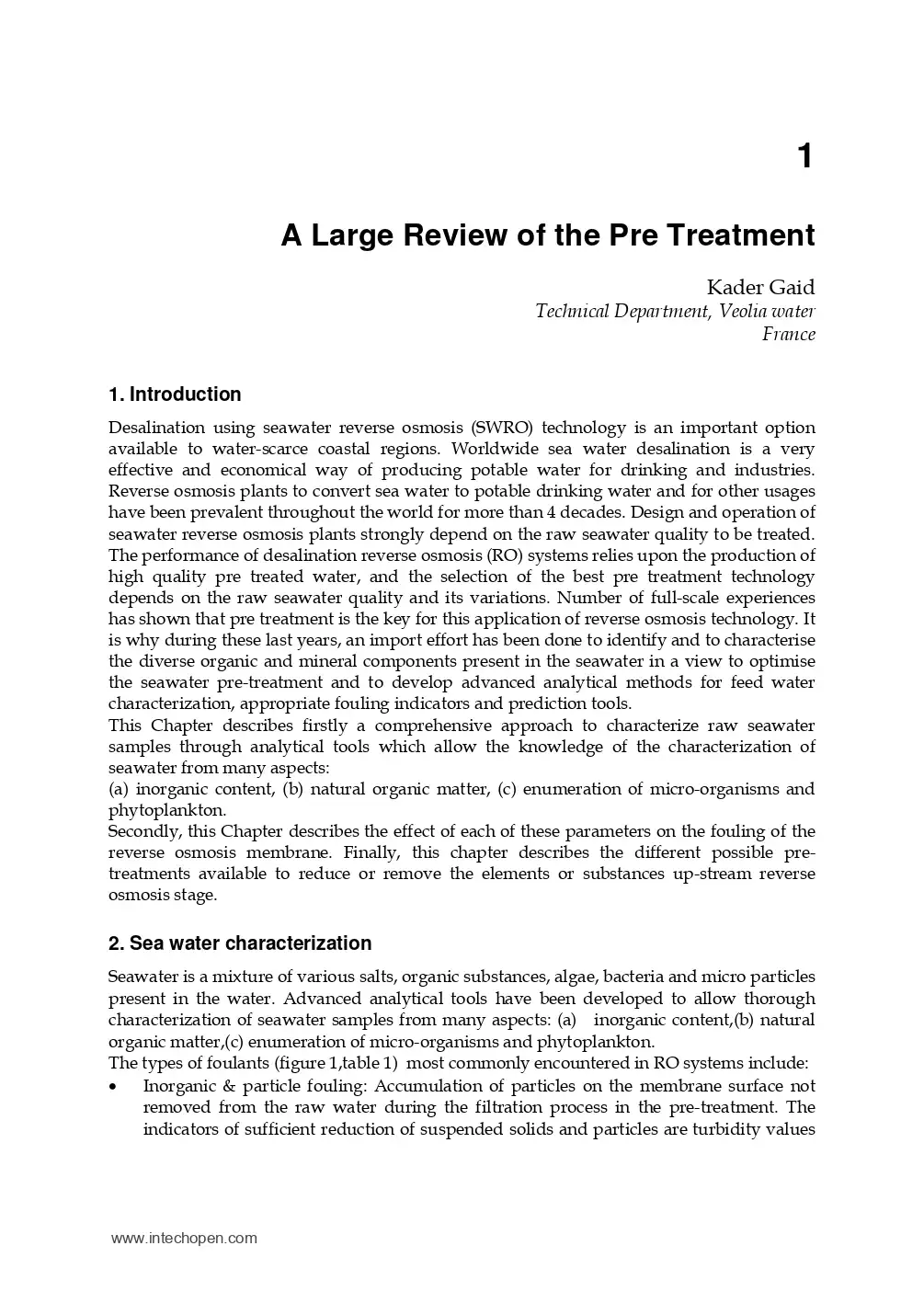
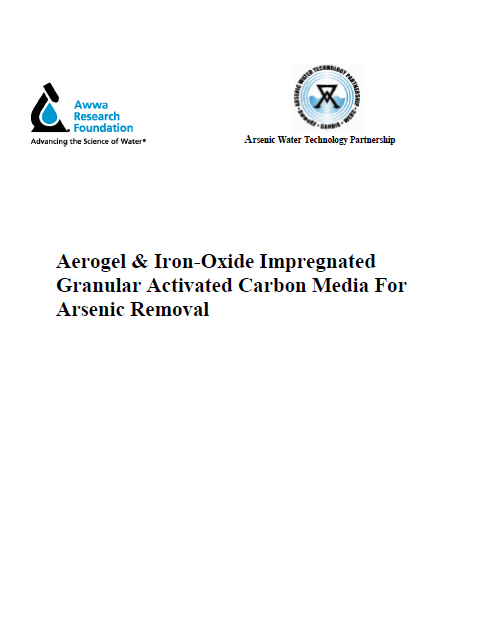
Reviews
There are no reviews yet.